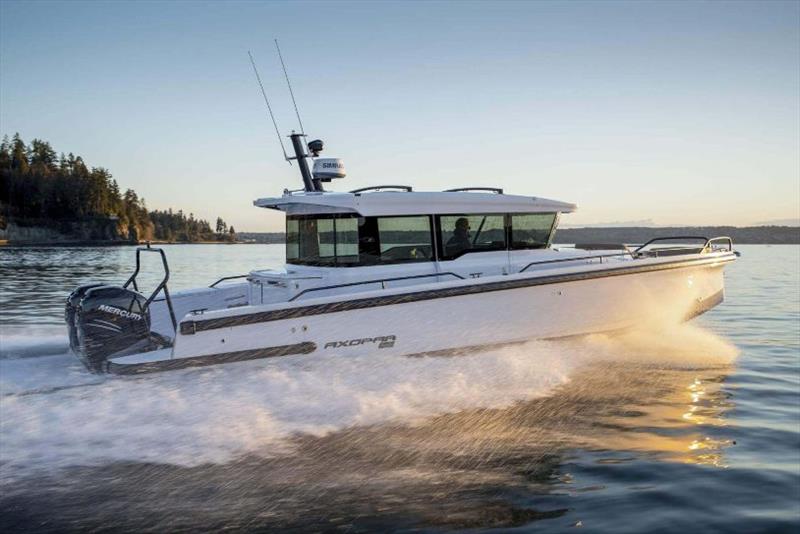
Axopar 37 Performance Review - Hull design, fuel consumption and trim techniques
by eyachts 17 Nov 2021 14:25 PST

Axopar 37 © eyachts
Joe Fox goes into detail about the Axopar 37 hull design and why it was engineered for speed, performance and efficiency. When taking out the boat he further discusses how to optimise the trim and why Axopar is the ultimate performer on the water.
The 37 comes in three models the Cross Cabin, the Sun Top and the Spyder version, however, the hull itself is exactly the same across the board.
Axopar actually spent more time in the R&D stage developing the hull shape of this second series Axopar 37 than they did on the original Axopar 37 so it shows how hard it was to make a better boat than the first series. The result of all the hard work is that it is 10% faster and 10% more efficient.
The Axopar 37s hull key features
- Very sharp entry reverse bow - designed to slice the surface of the water
- Two large chines - keeping the boat dry by reflecting spray straight back down into the water.
- Two hull steps - These channels suck air underneath the hull so at planing speed so the boat is actually sitting on a layer of bubbles reducing the friction which in turn reduces the power required to push the boat. This in turn reduces the fuel consumption and dramatically improves the performance and ride of the vessel.
Key statistics
- Range - 700 litres = 280 nautical miles at cruise speed
- Cruising speed - 28 to 30 knots
- Max speed
- Twin 300s - 50kts
- Twin 350s - 51 or 52 knots
Fuel consumption chart
Axopar 37ST MY21 2 x Mercury V8 300 Enertia Eco 19?
No Antifouling | 4820kg
Axopar 37C MY21 2 x Mercury L6 350 Rev 4 19?
No Antifouling | 5637kg
Trim Techniques
Between 12-15 knots there is very little trim or activation of the trim tabs needed because the hull technology that Axopar have designed really helps the boat to get up on the plane without raising the bow too much.
Between 21 - 23 knots trim the engines up altering the angle between the hull and the thrust of the props, bringing the boat up to a really comfortable planing angle so you're not driving the bow.
Chop - If you do come into a little bit of chop, trim the engines down slightly to drive the bow to give it a cutting motion through the water.
Turns - Because of the deep v in the hull and pronounced rails the boat can be put into quite a hard turn with little to no sideways slip. When in a turn the engines must be trimmed down to avoid any cavitation caused by the angle of the boat.